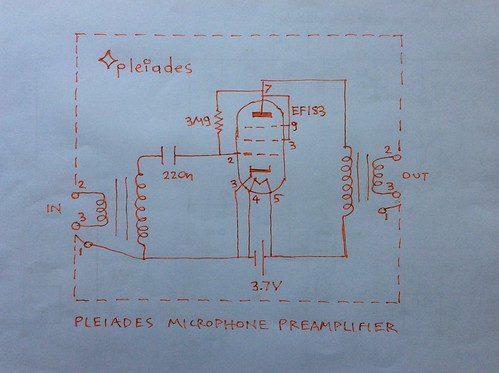Decide its operating conditions.
Instead of pulling the bias down for very high plate potentials and instead of pull bias up for very low plate voltage operation why not letting the grid free.
For example when we let the gird free on an underheated 1H4 at Vf=1.3V instead of 2V, it may be -150mV or -300mV depending on the particular tube. At 2V it would be even more negative as the electrons emmited have more kinetic energy.
Then we can use the Pleiades V6 circuit and supply anode voltage until we are happy with the sound.

(A fuse should always be used in series with any source of voltage for safety). No plate to rid pull up resistor should be used, just letting the grid free, no connected to anything except a DC isolating capacitor of high quality that would only pass the AC input signal.
Is this what George Neumann did for the VF14 on the U47 microphone?
When we are happy with the sound we may measure again the bias.
Then arrange a cathode resistor that produces the same potential difference.
Then if we connect a resitor from ground to grid there should not be any external grid current and no change in anode current as we respect the electron tube's decision on its free space grid potential.
We need the return path for a release time constant to the automatic gain effect. (If a very large signal drives the grid positive. The grid will collect electrons or negative charge and when the transient passes the grid would have been left negative ie there would be less gain or limiting or compression). The grid resistor will bring back the grid to the operating point at a certain time defined by the time constant dictated by the grid return resitor.
This is next day's experiment with grid at space potential and microphone. It sounded impressive.
http://euroelectron.blogspot.com/2018/07/1h4-with-grid-at-space-potential-mic.html
No comments:
Post a Comment